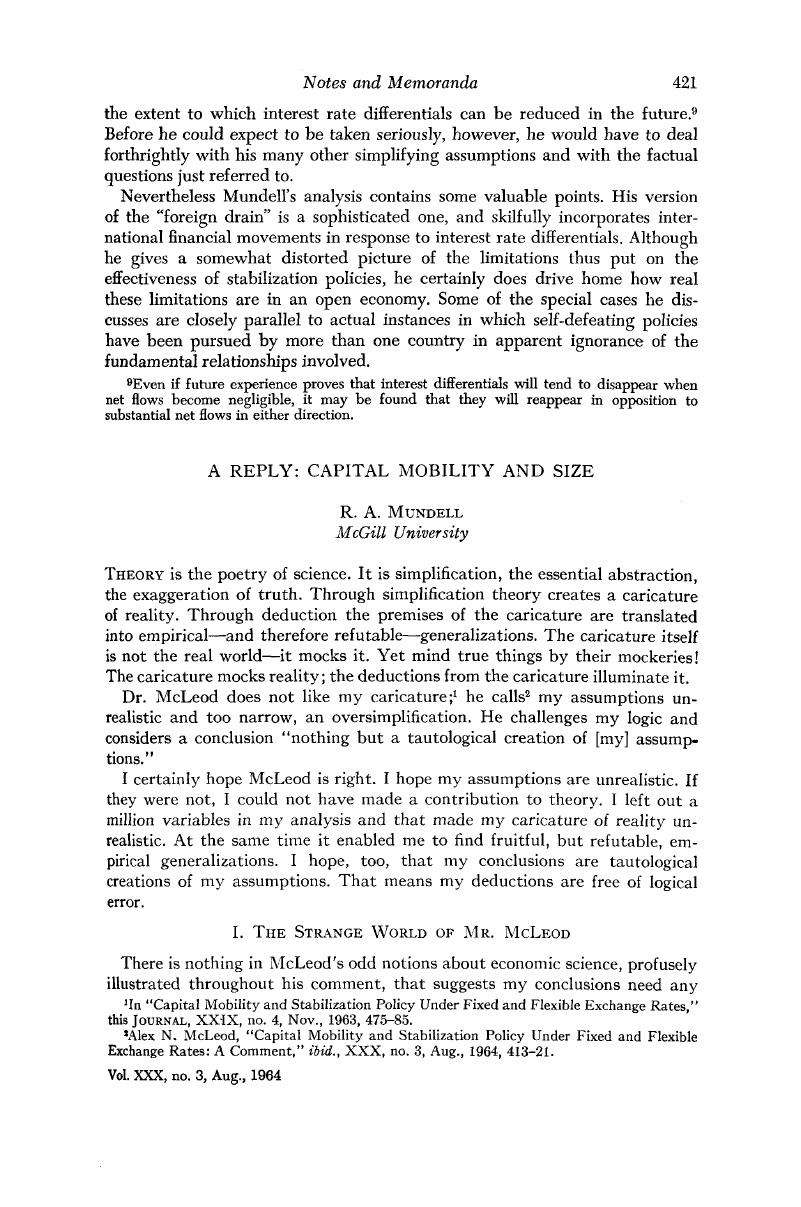Article contents
A Reply: Capital Mobility and Size
Published online by Cambridge University Press: 07 November 2014
Abstract

- Type
- Notes and Memoranda
- Information
- Canadian Journal of Economics and Political Science/Revue canadienne de economiques et science politique , Volume 30 , Issue 3 , August 1964 , pp. 421 - 431
- Copyright
- Copyright © Canadian Political Science Association 1964
References
1 In “Capital Mobility and Stabilization Policy Under Fixed and Flexible Exchange Rates,” this Journal, XXIX, no. 4, Nov., 1963, 475–85.
2 Alex N. McLeod, “Capital Mobility and Stabilization Policy Under Fixed and Flexible Exchange Rates: A Comment,” ibid., XXX, no. 3, Aug., 1964, 413–21.
3 The conclusions are literally valid only in a stationary state, but suitable assumptions about relative growth rates of stock variables can justify their application to an economy in which net investment is positive.
4 Under fixed exchange rates fiscal policy and wage-price policy might have to be inverted, in some situations, between employment and balance-of-trade targets; I leave the matter open for its application to the Canadian economy. Note that the balance of trade becomes a separate target when the level of foreign indebtedness becomes a matter for concern.
5 I discussed some of these matters in “Exchange Margins and Economic Policy,” forthcoming in J. C. Murphy, ed., Money in the International Order.
6 The reader can verify that this possibility is not ruled out by the conditions of dynamic stability under the postulates that incomes move in proportion to excess demands and that world interest rates rise in proportion to the excess world demand for money.
- 50
- Cited by




